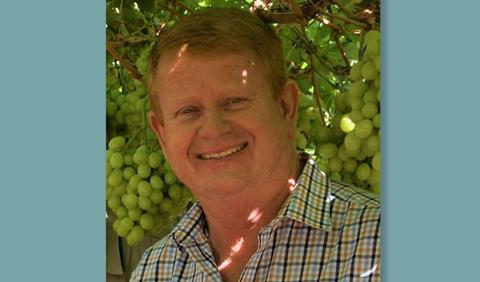Alwyn Dippenaar, new chairman of Sati, walks in the footsteps of a long tradition of grape farming in South Africa’s remote Orange River region
In the mid-1980s, reaching Blouputs in the Lower Orange River region was quite an ordeal. When you turned off the main road from Augrabies to Pofadder, and headed down to the river, you had to open many farm gates.

For unsuspecting supermarket buyers who visited farms, one leading grower had the practice of letting them open the gates, and once they drove through, pretending to forget them in the desolate, near-desert landscape.
Today there is a tarred road and Blouputs has cemented its position in the world of table grape production.
This is where we find the home of the Dippenaar Group which during the past 30 years has grown into one of the leading grape growing organisations in the country.
Alwyn Dippenaar is one of three sons of the founders of the business, Paul and Neeltjie Dippenaar, back in 1982. Currently there are 329ha in production with plans for considerable further expansion soon.
The company has also invested in infrastructure and today the farms have modern pack houses with state-of-the art pre-pack facilities.
The original farm was Gamcaip, a Khoisan word which means the ‘fountain in the stream’. There is in fact a hot water fountain in the middle of the stream and during times when the river level drops to low levels, one can see it bubbling under the river.
The aim is to talk to Alwyn Dippenaar, who also built up Dippenaar Choice Fruit as marketing division, but now has a greater industry function as chairman of Sati.
His term, he says, is the continuation of the work done by the previous chairman and the Sati board.
“There are many important projects which we as a board and the industry have been working on for some time and they will continue,” he explains. ”I am also excited that we have such a dynamic Sati team, led by the exuberance of youth coupled with experienced staffers, who will lead us forward.
”There are however several very important focus areas that is particularly relevant as the industry enters 2025,” he notes.
Dippenaar points to Sati’s focus on logistics and the role the new logistics model will play in stabilising logistics operations.
“We cannot solve these problems ourselves, but the information that we will derive from this model will be crucial to assist all role-players to contribute.”
Sati is also determined to maintain progress in new markets, but 2025 will probably see greater efforts to grow sales in the US.
“Over time we have seen demand for our grapes grow in the US and Canada and we see special opportunities from December to February which we now need to take advantage of,” he adds.